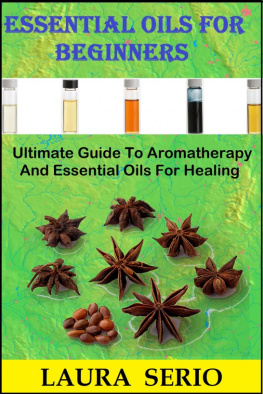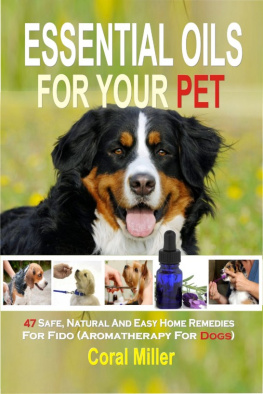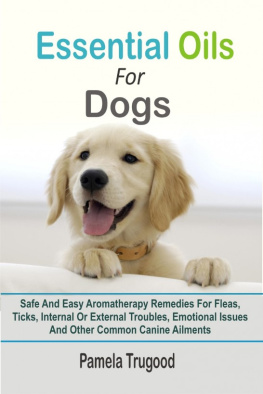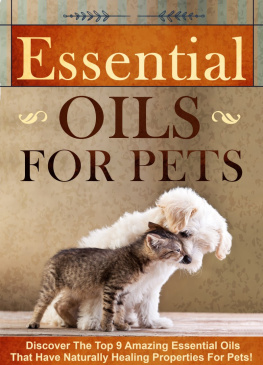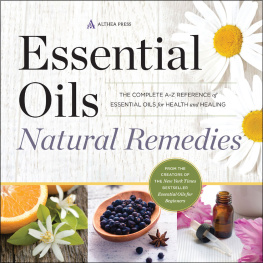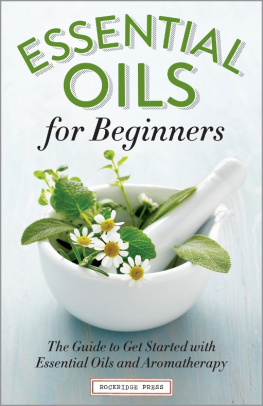Essential Oils For Pets
A Complete Practical Guide
of Natural Remedies and Ailments
Susan Scott
Copyright 2015
All rights reserved. The contents of this book may not be reproduced in any form, except for short extracts, without the written consent of the publisher.
Limit of Liability/Disclaimer of Warranty
The publisher and the author make no representations or warranties with respect to the accuracy or completeness of the contents of this work and specifically disclaim all warranties, including without limitation warranties of fitness for a particular purpose. No warranty may be created or extended by sales or promotional materials. The advice and strategies contained herein may not be suitable for every situation. This work is sold with the understanding that the publisher is not engaged in rendering medical, legal, or other professional advice or services. If professional assistance is required, the services of a competent professional person should be sought. Neither the publisher nor the author shall be liable for damages arising here from. The fact that an individual, organization, or website is referred to in this work as a citation and/or potential source of further information does not mean that the author or the publisher endorsethe information the individual, organization, or website may provide or recommendations they/it may make. Further, readers should be aware that websites listed in this work may have changed or disappeared between when this work was written and when it is rea d .
Your Free Gift As a way of saying thanks for your purchase, Im offering a free pdf eBook thats exclusive to my readers.
How to Have a Healthy Dog is for the dog owner who wants to better understand the health of their pet so they know when it is appropriate to take serious action to assist a vulnerable or ailing dog.
Did you know?
Dogs shouldnt be given chocolate? Do you know why?
Dogs get allergies just like people. Can you identify them?
How to give your dog CPR?
Are you giving your dog nutritional food? Walk down the aisle in the grocery stores and you will see every kind of dog food that you can imagine.
How to Have a Healthy Dog will reveal what you need to do in order to assure that your pet is getting the proper nutrients for his size and age. Remember..knowledge really is power!

This lengthy PDF (over 12,000 words) contains the answers to a number of questions about your pet. You can download this free eBook by going here .
Table of Contents
Introduction
History of Essential Oils and Aromatherapy in Animals
The history of essential oils is tangled with the history of herbal medicine, which in turn has been an integral part of natural healing in humans and animals. The use of essential oils dates back to ancient civilizations when they first played a crucial role in spiritual, aesthetic, and nutritional applications. It is known that physicians and priests had been using essential oils for thousands of years according to the Chinese and hieroglyphics manuscripts. Aromatic oils were used in the preserving process in Egypt. Basically, Egyptian temples were enthusiastic with the production as well as blending of oils and recipes. There are at least a hundred and eighty eight references to aromatic oils in the Bible, including spikenard, frankincense, myrrh and rosemary. The production of essential oils goes back to ca. 3500 BC when the ancient water distillation equipment for aromatic oils was employed, which is seen in the present day in the Texila Museum in Pakistan. Ancient Egypt, China, and India were the locations where aromatic oils were produced and used far and wide as fragrances, flavors and medicaments. The oils were also used as food ingredients. There are several examples of using citrus among other oils for desserts and sweets in the ancient Roman Empire, Greece and Egypt. The introduction and reintroduction of recipes in Europe is credited to Marco Polo on his return from a trip to China. Europe adopted the practice of using spice essential oils as food conservation agents.
A large number of naturally occurring essential oil plants have continually been used by the perfume industry among other companies. Recent advancements in science and technology have opened new views in the production of aromatic oils. The new advancement of refining and blending of oils followed in formulations of a great number of industrial products. Methods and techniques have been adopted in different organizations. In the sixties, the cultivation of lavender, patchouli, coriander, linaloe, vetiver, and geranium commenced. The therapeutic use of aromatic plant extracts and essential oils involved both clinical and holistic applications. Clinically, essential oils are administered orally and are commonly used by trained physicians. Holistically, essential oils are employed through a touch-care therapy and massage to treat physical as well as mental disorders. Aromatherapy is the healing use of aromatic oils, and is a recent addition to holistic medicine. There are so many methods used in aromatherapy for animals. Aromatherapy is increasingly popular due to its versatility. The method can be used alone or in combination with other conventional, alternative, complementary or holistic therapies. Caution should be exercised, as it can be dangerous if misused. This is the main reason why it is important to buy the highest quality essential oils, and use them accordingly. With careful use, animals around the world can receive the best that aromatherapy has to offer without endangering them.
Aromatherapy works with animals on different levels: spiritually, evolutionarily, emotionally, conditionally, and physically. There is no certain proof that animals can respond as effectively as humans can to essential oils. However, there have been multiple cases, particularly with dogs, where essential oils have been used as a synthetic fragrance. While it is obvious that animals prefer specific scents and that they are capable of liking certain aromas, there is no direct link to their brain activity. The shortage of complex emotional dynamics in animals simplifies aromatherapy use with them to some degree. Other features, including which essential oils to use, the quality and purity of essential oils, and how they should be diluted, determine the safety as well as the usefulness of aromatherapy with animals. The method is kinesiology aromatherapy, in which essential oils are chosen with regard to a subject reference. It can be difficult to choose essential oils for animals since they cannot exactly tell you how they think and feel; but they will show you varying reactions when presented with fragrances of different essential oils.
Chapter One
The Fundamentals of Essential Oils
What are Essential Oils and How Do They Work on Animals?
Essential oils are fascinating natural plant products which possess a large number of biological properties. Biologically, these oils consist of all volatile compounds that exert therapeutic and holistic effects on animals. These essential oils give the plant its very specific scent. When they are extracted, essential oils are highly concentrated as well as volatile. This simply means that they change from a liquid into a gas at a faster rate. The most common form of extraction is by steam distillation.
Essential oils work with animals on different levels: spiritual, physical, conditional, and emotional. An animals size as well as keen sense of smell must be taken into consideration when dealing with essential oils. Dogs have a much larger nasal cavity when compared to humans; therefore, their sense of smell is stronger and even better. Dogs have a much larger number of scent receptors than humans have. To effectively choose the best essential oils for animals, you need to effectively involve them in the choosing. Kinesiology aromatherapy is the technique you need to employ. This method involves choosing essential oils based on an animal's presence for them. Basically, if animals like the scent of an essential oil you present them with, then they must have an emotional or physical requirement for the oil. You can carefully monitor the reaction of your animal, either your dog or cat, to see whether or not they want the oil. Your pets should exhibit varying reactions when presented with aromatic oils. The best part is when your dog licks the bottle when he or she smells the fragrance. Your dog may sniff the fragrance and positively respond to it or it may sniff and look away. The stated reactions above are more than enough indication to let you know whether or not the essential oil you intend for your pet is a good choice.




